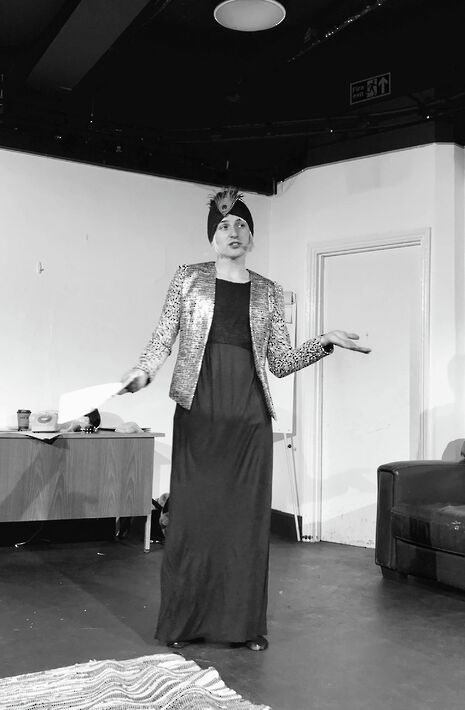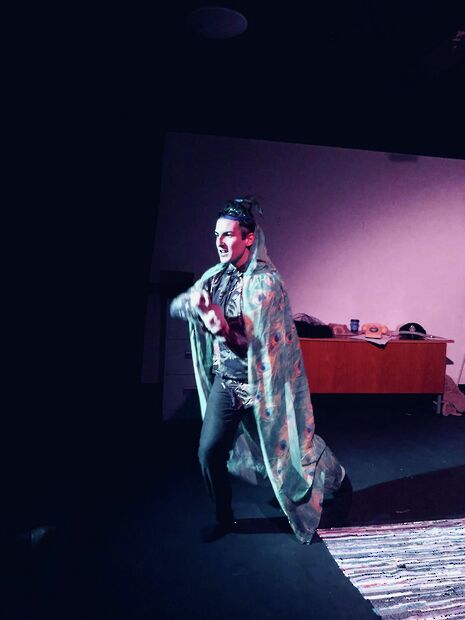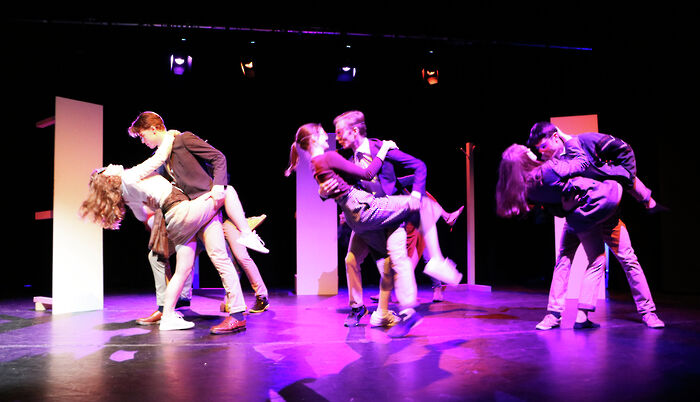Peacock review: ‘slightly hollow’
Our reviewer felt the poor writing of this show failed to do justice to the talents of the actor

Henry Wilkinson’s one-man show, Peacock, opens with an engaging prologue featuring peacock-related gags and an energetic club night conceit. Unfortunately, there is little in the rest of the show which matches the dynamism of this promising start. While there were certainly a few comedic highs thanks to some well achieved moments of audience interaction and Wilkinson’s physical performance, much of the writing fell flat and failed to elicit much more than awkward giggles from the audience.
Wilkinson’s ability to construct characters deserves praise, and in particular his vocal and physical work is excellent; memorable moments include an actress from Luxembourg with affected grace and a frenzied headmaster with a penchant for the melodramatic. However, while the initial impression of each personage was often enticing, there was rarely a satisfactory payoff. Rather, the sketches all suffered from a lack of variety in the jokes and a tendency to overstay their welcome. This was partly a structural issue: each of the five characters had an uninterrupted section devoted to them, but if they instead appeared for shorter periods and reappeared subsequently throughout the show, the energy and pace of the performance could have been maintained.

This uniformity of form and style also carried over to the show’s framing, which often relied on Wilkinson breaking the fourth wall in order to introduce the next character. Although metatheatrical comedy is a guaranteed way to get laughs, its constant recurrence undermined Wilkinson’s writing and quickly became a tired ploy.
Three out of the five characters were female, and these were undoubtedly the weakest. Whereas a writer of gothic short stories stood out as Peacock’s most nuanced creation and the impassioned headmaster was endearing simply by virtue of the energy brought to the role, Wilkinson’s decision to emphasise his cross-dressing parts felt misjudged. He tended to characterise his women by encouraging the audience to mock them for faults which were markedly feminine: they were poorly dressed or obsessed with their appearance, spinsters or the mindless slaves of teen heartthrobs. In addition, as opposed to his two male roles, all the female characters were presented as having failed in their ambitions or line of work. Though this must have been an unintended subtext to the show, it made this reviewer somewhat uncomfortable and it was disheartening to see a talented comic resort to outdated stereotypes.
While several scene changes were managed by a return to the initial club setting, some featured entertaining audio sketches which once more evidenced Wilkinson’s impressive vocal range and a striking ability to construct short, witty gags. Susannah Williams’s technical direction was excellent; many sketches relied on quick changes of lighting and sound, and the lip-synching segues were incredibly smooth. An increased focus on the interaction between technical elements and comedic writing could have been very beneficial.
Wilkinson was at his best when he was dancing, lip-synching or interacting with his audience, and he appears to have much potential as a well-rounded comedic performer. Nevertheless, Peacock often failed to make the most of these talents due to writing which consistently felt underworked, leaving its audience feeling slightly hollow.
Peacock is on at the Corpus Playroom at 9.30pm, 18-20th Jan
 News / CUP announces funding scheme for under-represented academics19 December 2025
News / CUP announces funding scheme for under-represented academics19 December 2025 News / Cambridge welcomes UK rejoining the Erasmus scheme20 December 2025
News / Cambridge welcomes UK rejoining the Erasmus scheme20 December 2025 News / SU reluctantly registers controversial women’s soc18 December 2025
News / SU reluctantly registers controversial women’s soc18 December 2025 Film & TV / Timothée Chalamet and the era-fication of film marketing21 December 2025
Film & TV / Timothée Chalamet and the era-fication of film marketing21 December 2025 News / News in Brief: humanoid chatbots, holiday specials, and harmonious scholarships21 December 2025
News / News in Brief: humanoid chatbots, holiday specials, and harmonious scholarships21 December 2025









